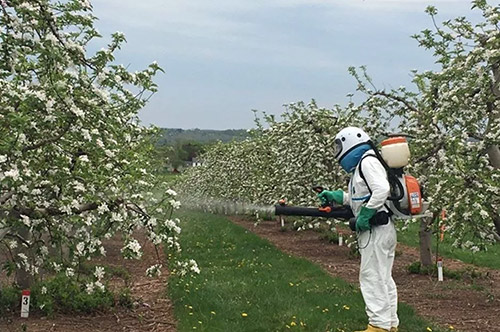By Holly Riddle

Last summer, HappyValley Industry reported on Pennsylvania’s first-ever carbon capture project, and how the project, headed up by developer KeyState Energy, will have major local and statewide impacts. After circling back with KeyState Energy’s CEO Perry Babb a year later, it’s clear that the project’s impact will reach much further — changing the world’s approach to energy for good.
When we last spoke with Babb, the $1 billion KeyState project (or, rather, the newly $2 billion project) was in its second phase of engineering, with expectations for the project to be operational by the end of 2026.
The project includes a closed system of natural gas extraction and manufacturing that produces zero-emission and emission-reduction products. The project also captures CO2 and returns the CO2 deep underground for permanent storage. It all furthers the development of the hydrogen economy.
As of today, Babb has extended his timeline and budget, with a new goal to begin commercial operations by 2027 or 2028 — but the delays and added costs are not without good reason.
Last year’s second phase of engineering just recently wrapped up, due to re-engineering efforts that allowed the project to reach new and unprecedented milestones.
“Essentially, what we were doing during that phase was trying to maximize the opportunity around geological storage and the way we would produce the hydrogen, to get us to the lowest practical carbon intensity score,” said Babb. “Our partners … have worked night and day for the last year on this and the results are stunning.”
We’ll easily have the lowest carbon intensity score in natural gas production at a large scale on the planet and virtually will have eliminated methane emissions and CO2 emissions.
The lower the carbon intensity score, the cleaner the energy and the fewer emissions are emitted over the entire manufacturing process. Thanks to the KeyState partners’ — Frontier Natural Resources and Black and Veatch — tireless efforts, Babb reported that the project, which sits on 7,000 remote, rural acres in Clinton County, will boast one of the lowest carbon intensity scores in the world.
“We’ll easily have the lowest carbon intensity score in natural gas production at a large scale on the planet and virtually will have eliminated methane emissions and CO2 emissions,” he explained. “You can imagine the excitement from those in the industry. This is not a laboratory. This is 12 [billion cubic feet] of gas a year … It’s historic. The implications are dramatic for the natural gas industry.”
The last year’s engineering was also used to increase the project’s carbon capture rate in hydrogen production to above 99% and, thirdly, to add zero-carbon electricity generation with the inclusion of a revolutionary 100% hydrogen gas turbine.
These milestones achieved, however, the work is still far from done.
For the rest of 2023, KeyState will fundraise for its next round of engineering, scheduled to begin in Q1 2024. This next round of engineering will include permitting and require about two years, before construction and commissioning, which will take another approximately two and one-half years — which all adds up to the newly projected goal date of being operational by 2027 or 2028.
Throughout all this, KeyState has been working in collaboration with Penn State, with the project offering Penn State workforce development opportunities and joint opportunities for research and development. For students, a planned facility at Innovation Park will allow them hands-on experience in the large-scale energy facility, without the need to travel far from campus.
“When you can monitor precisely what’s happening not just at the facility, but within a 7,000-acre tract, you can see every well and machine, et cetera — it really helps people understand that this is not your grandpa’s ammonia plant running in your town’s backyard,” said Babb.
Over the last year, KeyState has also taken steps to establish a second site in southwest Virginia, where it plans to replicate the same work it’s doing in central Pennsylvania, there.
“It’s significant in energy transition, but also significant for Appalachian jobs,” said Babb.
But with another site already in the plans for Virginia, why set up the first near Happy Valley? It all came down to the right combination of factors and the area’s rich history of entrepreneurialism.
We can have great emissions reduction and amazing job creation, and hundreds and hundreds of millions of dollars of economic impact in a four-county area that has chronic high unemployment. We can make generational change. American innovation is not an ‘either/or’ innovation. It’s both.
“It’s the right combination of gas on a large, single-owner tract of 7,000 acres,” explained Babb, “and it’s stranded gas, which means it’s not connected to an outside pipeline.” Add in the geological storage asset and you have what Babb calls the project’s “secret sauce.”
He continued, “The secret sauce is integrating it all together. You have on-site gas production, on-site manufacturing, on-site CO2 storage and on-site power generation.”
But for that “secret sauce” to even exist, you have to go back to the area’s long-standing history and culture of entrepreneurialism.
Babb described, “Back in the 1970s, a husband-and-wife team in Lockhaven — he was a surgeon, she was a homemaker — began to collect tracts of land up in this very remote area. Coal began to decline, and they had a vision to create jobs and commerce … They ultimately collected about 10,000 acres. They tried some different types of coal mining and some different kinds of lumber. They thought, when the natural gas and Marcellus revolution came, that would be their opportunity.”
However, that opportunity is now. Thanks to the couple’s — Dr. Forney “Fred” and Mary Winter — foresight, KeyState is fulfilling their vision from the 1970s.
“As you can imagine, [Mary]’s beside herself,” Babb continued, noting that Fred has since passed. “It’s a thousand construction jobs, hundreds of full-time jobs and launching a new era of hydrogen production in Appalachia. It’s their vision that’s being fulfilled, so the plant will be named after, and dedicated to, them.”
It’s not just the existing, local employee base that will benefit from the KeyState project, though. The project is poised to bring countless new industries and business and employment opportunities to the region as well, over the next century.
Babb explained, “Historically, when there’s a reforming plant, ammonia hydrogen plant or industrial gas plant built in an area, companies that need that gas locate to be closer to them, and the lifespan for a hydrogen ammonia plant is 80–90 years as they’re updated and added to — so [the KeyState project] will definitely stimulate heavy manufacturing that’s related to clean energy feedstock. We assume then, as demand for clean hydrogen matures, there will be an opportunity for numerous other, similar plants across Appalachia.”
Whatever aspect of the project’s history that you ask Babb about, though, the key theme is optimism. Looking to the future, he sees American energy in a phase wherein there’s no need to choose between dramatic emissions reduction and job creation — we can have both.
“We can have great emissions reduction and amazing job creation, and hundreds and hundreds of millions of dollars of economic impact in a four-county area that has chronic high unemployment. We can make generational change,” concluded Babb. “American innovation is not an ‘either/or’ innovation. It’s both.”




Comments
Powered by WP LinkPress